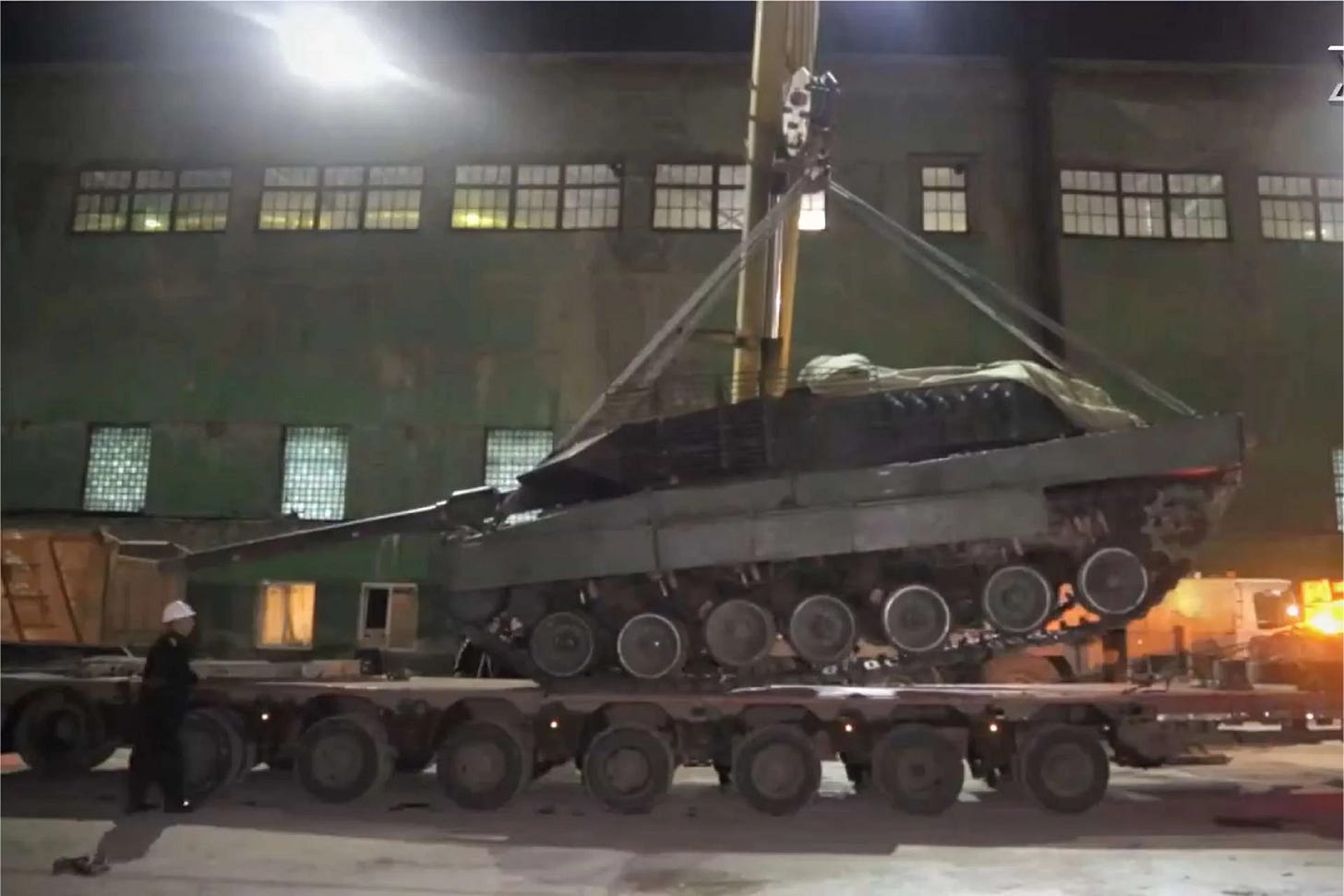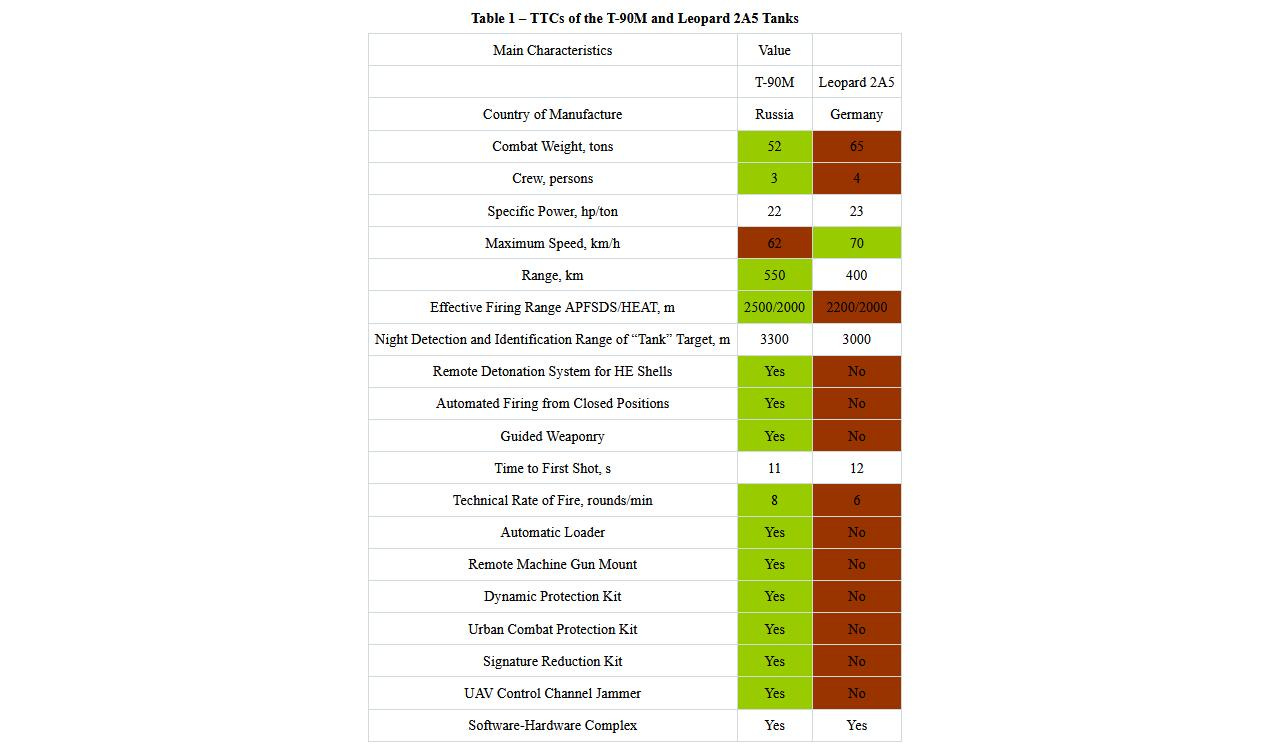Russian Engineers Inspected a Captured Ukrainian Leopard 2A6 Tank, But Couldn't Even Get the Tank's Designation Right
The 38th Research Institute seems to think it got its hands on a Leopard 2A5
The same Russian military research institute that took apart and assessed a damaged American-made M-2 Bradley fighting vehicle that Russian forces captured from the Ukrainians has also taken apart and inspected a captured German-made Leopard 2A6 tank.
Where the engineers at the 38th Research Institute were pretty impressed by the 33-ton, 10-person M-2 with its accurate autocannon, excellent mine-resistance and roomy interior, they were less impressed by the 69-ton, four-person Leopard 2A6.
But there are reasons to be deeply skeptical of the institute’s report. For starters, it never once refers to the captured Leopard 2A6 by its correct designation, instead referring to it as a Leopard 2A5—a totally different model of tank with a different main gun.
Germany and Portugal donated 21 Leopard 2A6s to Ukraine in early 2023. In two years of hard fighting, the Ukrainians have lost at least six of them. Most of the others have been damaged, recovered and repaired multiple times.
It’s apparent the subject of the 38th Research Institute’s report is a Leopard 2A6 that the Russians grabbed in the spring of 2024 after the tank was immobilized by a mine and then further damaged by an anti-tank munition before its capture. Russian tank-maker Uralvagonzavod received the tank by flatbed truck in October—and loudly celebrated the coming inspection.
The resulting report compares the 2000s-vintage Leopard 2A6 to the roughly contemporary Russian T-90M and consistently extols the 51-ton, three-person T-90 as the superior tank, with a more accurate and faster-firing main gun and an active defense system, which intercepts incoming rounds—and which the Leopard 2 lacks.
But the big difference between the Leopard 2A6 and the T-90M isn’t technological—-it’s philosophical. And it’s unclear fresh information resulting from a close inspection would change Russian thinking. “The Russians will likely be able to figure out some things—but what exactly, is hard to say,” German tank-maker KMW told Defense News.
The philosophical split mostly concerns crew survival. German engineers prioritized crew safety. Russian engineers didn’t.
Perhaps most critically for the Leopard 2’s survivability, KMW designed the type with two compartments for its 120-millimeter main gun ammunition: one in the hull and another in the turret. The turret compartment has blow-out panels that vent a blast outward in the event the ammo is struck and cooks off; Ukrainian crews don’t use the more vulnerable hull stowage, which lacks a blowout panel.
Russian tanks by contrast stow their ammo in the bustle under their turrets. When the ammo cooks off, it blows the turret—and the crew—into the sky. That’s the main reason it’s a lot easier to damage a Leopard 2 and rattle its crew than it is to destroy a Leopard 2 and kill its crew. Whereas a clean hit on a Russian T-90 might catastrophically blow up the tank and crew.
It’s not for no reason that Ukraine’s 21 Leopard 2A6s—of which perhaps 15 survive—have been damaged, recovered and repaired so many times. They and their crews tend to survive all but the most catastrophic hits. The same can’t be said of the roughly 200 T-90s Russia has lost.
Read more:
The Russians Have Captured 11 Ukrainian M-2 Bradleys. Studying the Vehicles, They Were Impressed.
Of the more than 300 M-2 Bradley infantry fighting vehicles Ukraine received from the administration of former U.S. Pres. Joe Biden, at least 11 have been damaged, immobilized and captured by Russian troops.







